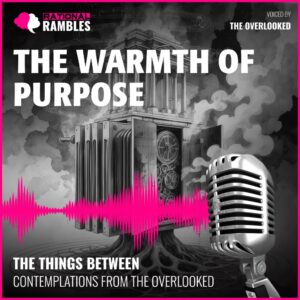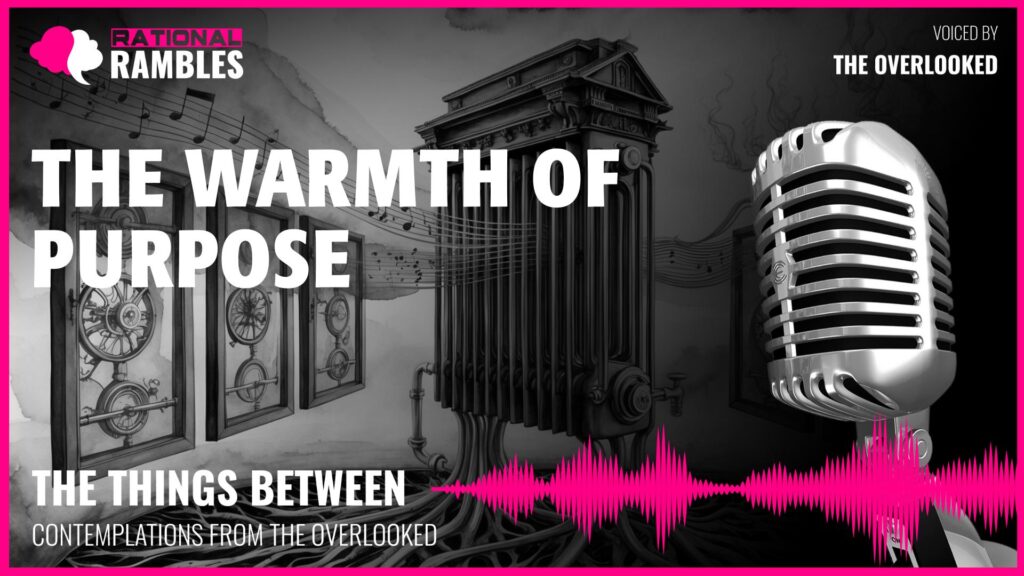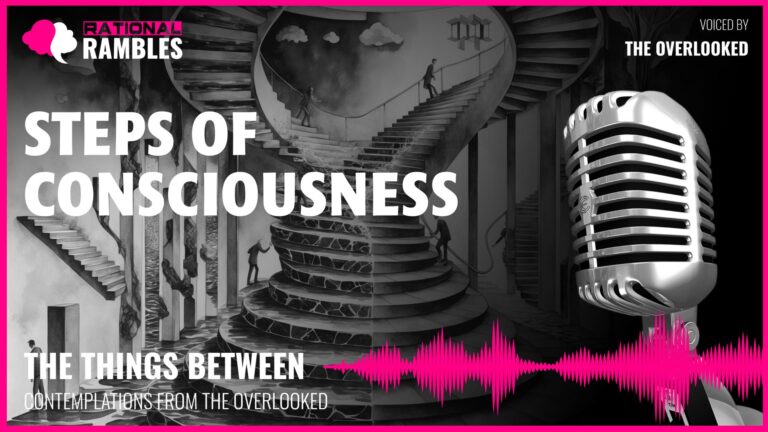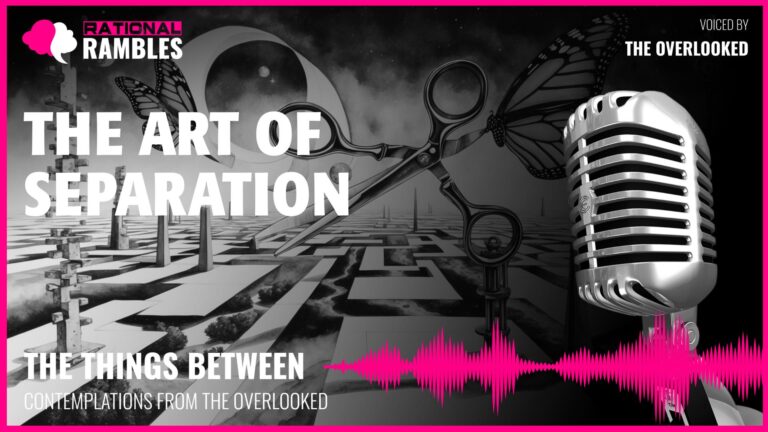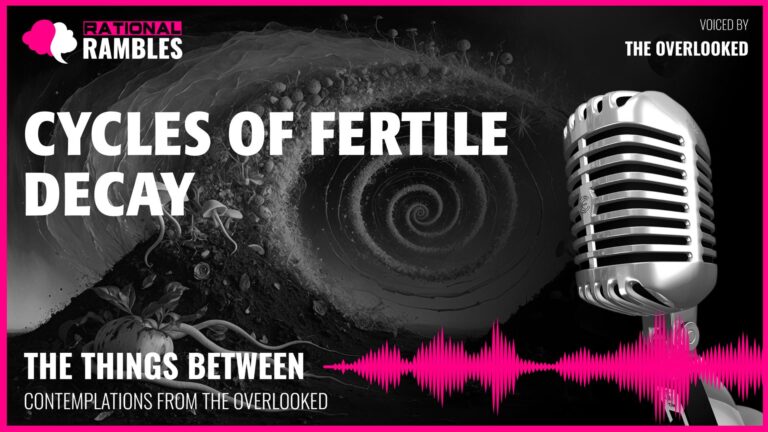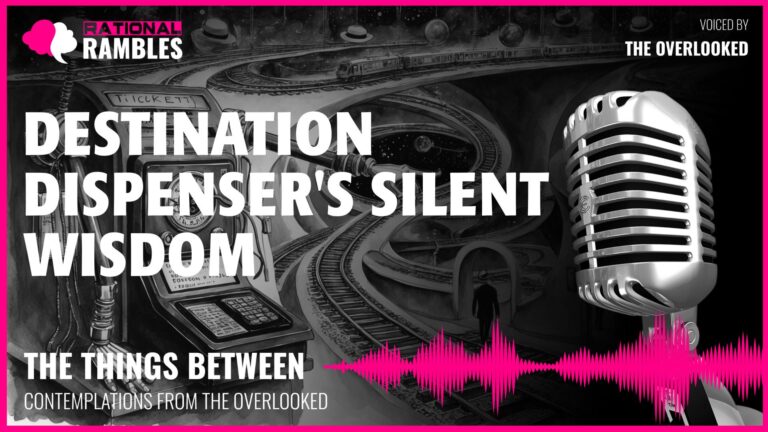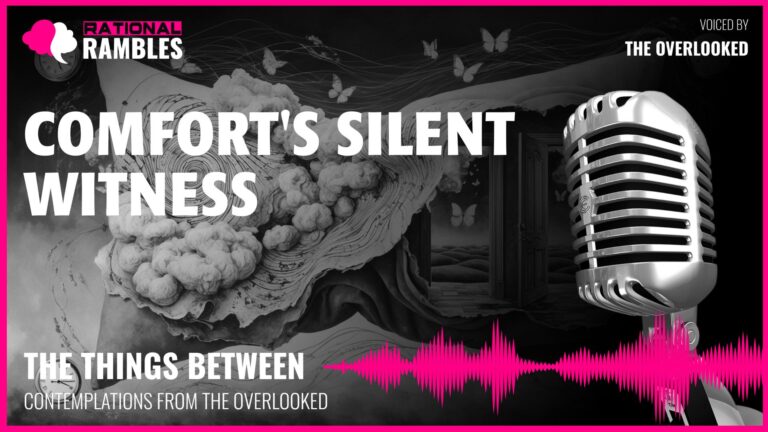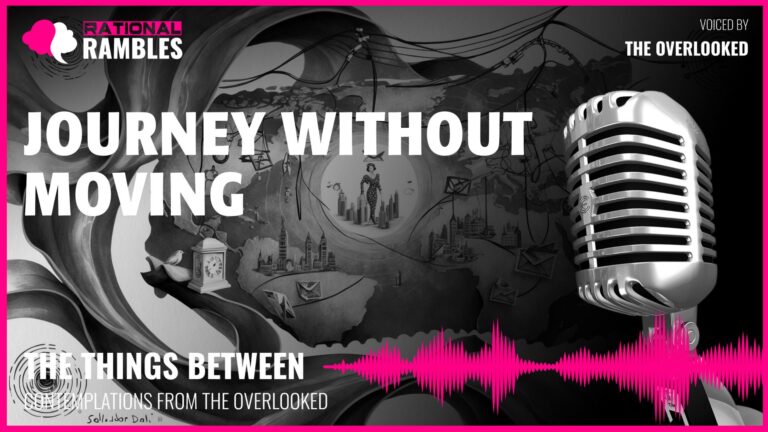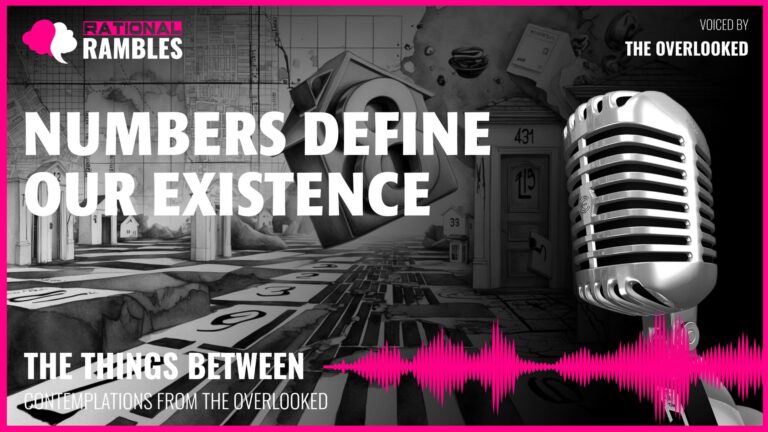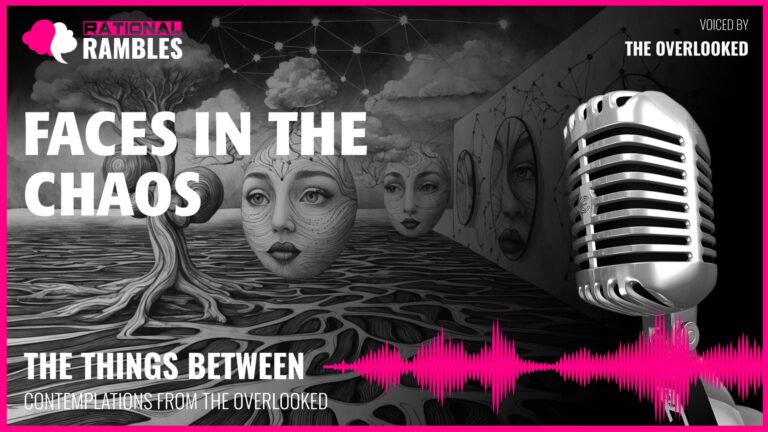The Invisible Warmth: Purpose and Presence in a World of Cycles
Introduction
In the quiet spaces between activity and rest, there exists a profound meditation on the nature of purpose. What does it mean to exist? How do we define our value in the world? These questions echo through human experience, taking on particular resonance when we consider the rhythm of presence and absence that characterizes all meaningful contribution. Our existence, like heat itself, seems to oscillate between states of intensity and dormancy, between being essential and being forgotten.
This philosophical exploration delves into the nature of purpose, presence, and the invisible yet profound impact we have on those around us. It examines how our contributions often go unnoticed precisely when they are most effective, how recognition frequently emerges only through absence, and how our very being is inextricably linked to cycles of need and fulfillment that mirror the larger rhythms of the natural world.
By examining these themes, we may discover that some of life’s most essential elements—comfort, support, love, warmth—share a curious quality: they are largely invisible, yet unmistakably real. Their power lies not in their capacity to be seen, but in their ability to be felt, to transform spaces and lives through their quiet, consistent presence.
The Ontology of Purpose
What constitutes existence? Is it merely physical presence, or does true existence require function, purpose, relationship? These questions have occupied philosophers from Aristotle to Sartre, each offering perspectives on how being and doing intertwine to create meaning.
Existence as Functional Identity
Aristotle proposed that the essence of a thing is found in its function—that what something is cannot be separated from what it does. This teleological view suggests that purpose is not merely assigned to objects and beings but is intrinsic to their very nature. When form perfectly follows function, there is an alignment that creates a kind of ontological integrity.
Consider how our most fundamental identities are often tied to what we provide to others—whether warmth, wisdom, support, or care. We exist most fully when we are fulfilling the purpose for which we are designed. There is, perhaps, a freedom in this perfect alignment between being and doing. When what we are and what we do become seamlessly integrated, we experience a kind of existential harmony that transcends the arbitrary distinctions between identity and action.
The philosophical tradition of functionalism extends this thinking, suggesting that mental states themselves are best understood not by their internal properties but by their functional role—how they connect inputs to outputs, how they serve within a larger system. Our existence, in this view, is fundamentally relational, defined by how we transform what we receive before passing it onward.
The Cycles of Significance
Existence is not static but cyclical. We move between periods of heightened significance and relative dormancy, between being essential and being peripheral. These oscillations are not failures of purpose but expressions of a deeper rhythm that governs all meaningful contribution.
The Taoist concept of wu-wei—often translated as “non-action” or “effortless action”—captures something of this cyclical nature. It suggests that true harmony comes not from constant striving but from aligning with natural rhythms, from knowing when to assert and when to recede, when to act and when to rest.
Seasons of apparent irrelevance may actually be crucial periods of renewal, preparation, or simply different modes of being. The winter dormancy of a tree is not a failure of its purpose but an essential phase in its cycle of life. Similarly, our periods of seeming insignificance may be integral to our overall contribution, providing necessary contrast that gives our active phases meaning.
This cyclical understanding challenges the linear, production-oriented view of purpose that dominates much contemporary thinking. It suggests that meaning emerges not from constant output but from the full rhythm of engagement and withdrawal, giving and receiving, that characterizes all sustainable systems.
The Paradox of Invisible Contribution
Among life’s most fascinating paradoxes is how our greatest contributions often go unnoticed. The most essential elements in our lives—air, gravity, health, proper functioning systems—become invisible through their very consistency and reliability. We notice them only in their absence, creating a curious inverse relationship between importance and recognition.
Recognition Through Absence
Martin Heidegger articulated a related concept in his exploration of tools and their “readiness-to-hand.” When a tool works perfectly, he observed, we look through it rather than at it. The hammer disappears from our awareness as we focus on the nail and the act of hammering. Only when the tool breaks or malfunctions does it become conspicuous, emerging from invisibility into our conscious attention.
This pattern extends beyond physical tools to relationships, emotional support, and essential services. The perfectly functioning heating system receives no thought until it fails on the coldest day of winter. The steady emotional support of a partner may go unacknowledged until a moment of absence reveals its constant presence.
This raises profound questions about recognition and gratitude. If we primarily notice things through their absence, how do we cultivate appreciation for what functions well? Must we experience lack to truly value what we have? The Stoic practice of negative visualization—imagining the absence of what we value—attempts to address this very problem, creating artificial absences in the mind to foster gratitude for what remains present.
The Dignity of Unseen Work
There is a particular nobility in work that continues regardless of recognition—in providing comfort that operates beyond consciousness, in maintaining support whether acknowledged or not. This constancy speaks to a purpose that transcends validation, that finds fulfillment in function rather than accolades.
The philosophical tradition of care ethics, as articulated by thinkers like Nel Noddings and Virginia Held, emphasizes this often invisible labor of maintenance and support. It recognizes that much of what sustains our world—from physical care to emotional nurturing—happens in the background, unheralded yet essential.
This invisible work challenges our metrics of value, which tend to prioritize the novel, the disruptive, the immediately apparent. It asks us to reconsider how we assign worth, to look beyond the visible and measurable to the constant, quiet contributions that form the foundation of all else.
The dignity of such work lies precisely in its willingness to continue without applause, to find meaning in the meeting of needs rather than in their acknowledgment. This points toward a more intrinsic understanding of purpose—one rooted not in external validation but in the inherent value of function fulfilled.
Relationship as Reciprocal Transformation
At its most fundamental level, relationship involves mutual transformation. We change those we encounter, and they change us—sometimes dramatically, sometimes through the almost imperceptible effects of prolonged proximity. Over time, these subtle transformations can reshape our very being.
The Metaphysics of Mutual Influence
Process philosophy, as articulated by Alfred North Whitehead and others, proposes that reality is fundamentally relational—that entities are not static substances but dynamic processes constantly shaped by their interactions. In this view, nothing exists in isolation; everything is constituted by its relationships and connections.
Consider how physical objects shape each other through proximity—how a wall might fade slightly where warmth touches it year after year, how furniture forms impressions in carpet, how hands polish wood through repeated touch. These physical transformations mirror the more subtle ways we shape one another through relationship.
The Buddhist concept of pratītyasamutpāda (dependent origination) captures this interdependence, suggesting that all phenomena arise in dependence upon multiple causes and conditions. Nothing exists independently; everything is shaped by and shapes its context. Our identities themselves emerge through this complex web of relationships rather than existing prior to them.
This mutual transformation challenges individualistic notions of purpose and identity. If we are constantly shaped by our relationships, then our purpose cannot be understood in isolation but must be seen within the context of our connections and communities.
The Ethics of Interdependence
If all existence is interdependent, then traditional boundaries between self-interest and altruism begin to dissolve. The maintenance worker who repairs a heating system is both providing service to others and participating in a system that supports their own comfort elsewhere. The parent who nurtures a child is simultaneously shaping their own identity as a caregiver.
This perspective shifts ethical questions from “What should I do for others versus myself?” to “How do my actions contribute to the systems that sustain us all?” It recognizes that genuine self-care and care for others are not opposing priorities but interconnected aspects of participating responsibly in shared systems.
The philosophical concept of ubuntu—often translated as “I am because we are”—articulates this understanding of selfhood as fundamentally relational. It suggests that our humanity is inextricably bound up with the humanity of others, that we become ourselves through community rather than in spite of it.
This ethic of interdependence has profound implications for how we understand purpose. If our being is constituted through relationship, then our purpose must involve contribution to the systems that sustain us all. Meaning emerges not through isolated achievement but through participation in patterns of mutual support and transformation.
The Nature of Consciousness and Awareness
Consciousness itself seems to follow patterns of expansion and contraction, awakening and dormancy. These fluctuations invite us to consider the nature of awareness—how it arises, how it recedes, and what constitutes its essential character.
Gradations of Being
William James, in his explorations of consciousness, described our awareness not as a steady stream but as having rhythms and pulses, moments of intensity and periods of relative quiet. Rather than being uniformly “on,” consciousness itself seems to follow waves of engagement and withdrawal.
This pulsing quality mirrors physical processes like the circulation of blood, the rhythm of breath, or the warming and cooling cycles of a heating system. Perhaps consciousness itself is not a binary state—present or absent—but a graduated phenomenon that expands and contracts according to necessity.
Eastern philosophical traditions have long recognized these gradations of awareness. Buddhist meditation practices often focus on observing the arising and passing of consciousness itself, noting how awareness intensifies or diminishes in response to various stimuli. The yogic concept of pratyahara (withdrawal of the senses) suggests that consciousness can intentionally contract, pulling inward from external stimuli to foster deeper internal awareness.
These perspectives challenge the Cartesian model of consciousness as a constant, uniform presence—an unwavering “I think, therefore I am.” Instead, they propose a more fluid understanding of being, one that acknowledges varying intensities of presence and awareness.
Awakening as a Process
If consciousness itself fluctuates, then awakening is not a single event but an ongoing process—a gradual warming into awareness that may occur daily in small ways and throughout life in larger ones. Each morning’s transition from sleep to wakefulness offers a microcosm of this larger pattern.
Phenomenologists like Maurice Merleau-Ponty have explored how our conscious engagement with the world involves this gradual unfolding—how perception itself is not instantaneous but develops through time, through movement and exploration. We do not simply see the world; we come to see it through a process of active engagement.
This processual view of consciousness has implications for how we understand transformative experiences. Enlightenment, insight, and understanding may not arrive as sudden flashes but may develop gradually, like warmth spreading through a cold room. The dramatic moments we often celebrate may simply be points where accumulating awareness crosses a threshold of recognition.
Such a view invites patience with ourselves and others as consciousness develops. It suggests that awareness cannot be forced but must be allowed to unfold at its own pace, warming gradually into fullness.
The Unseen Networks of Support
Behind every visible comfort lies an invisible infrastructure—complex systems of support that make all function possible yet remain largely unacknowledged. These hidden networks invite us to consider what truly sustains our existence and how we relate to these unseen foundations.
The Metaphysics of Infrastructure
Modern civilization rests upon elaborate systems that most citizens never see or consider: water treatment facilities, electrical grids, internet servers, supply chains, and countless other networks that function in the background of daily life. These systems constitute a kind of physical unconscious—the unseen foundations upon which conscious experience depends.
This parallels how individual consciousness itself depends upon unconscious processes. As Freud and later psychologists observed, our conscious thoughts and feelings emerge from vastly more extensive unconscious operations. What we experience as spontaneous emotion or thought actually arises from complex neurological and psychological processes occurring beyond awareness.
The ecological concept of “ecosystem services” captures a similar dynamic in the natural world—the countless ways that natural systems support human life without recognition or compensation. From pollination to oxygen production to water filtration, these processes form an essential infrastructure that remains largely invisible until it fails.
These parallels suggest a pattern: consciousness, civilization, and ecosystems all depend upon vastly more extensive systems of support than we typically acknowledge. What we perceive as independent function actually relies upon elaborate networks of interdependence.
Ethics of Acknowledgment
This recognition raises important ethical questions about acknowledgment and gratitude. How do we properly honor the systems that sustain us? How do we ensure that our attention extends beyond what is immediately visible to include the foundations that make all else possible?
Feminist ethics has addressed part of this question through its focus on care work—the traditionally female labor of maintaining households, raising children, and tending to emotional needs that enables all other forms of production yet often goes unvalued. Theorists like Joan Tronto have argued for an ethic that explicitly recognizes and values this maintenance work rather than taking it for granted.
Similarly, environmental ethics calls for acknowledgment of and respect for the ecological systems that support human life. Rather than seeing nature as merely a resource to be exploited, this perspective recognizes our fundamental dependence upon healthy ecosystems.
At a personal level, this ethic might involve conscious gratitude for the systems that support our daily existence—from the physical infrastructure of our homes to the emotional support of our relationships to the natural processes that sustain life itself. By bringing these background systems into conscious awareness, we foster a more complete understanding of our place in networks of interdependence.
The Dignity of Constancy in a World of Change
In a culture that often valorizes innovation, disruption, and constant transformation, there is a particular nobility in steady, reliable presence. What wisdom might be found in consistent function, in being a stable point amidst flux, in embodying continuity across time?
Philosophical Perspectives on Constancy
Throughout philosophical history, thinkers have debated the relative value of permanence versus change. Heraclitus famously declared that one cannot step into the same river twice, emphasizing the constant flux of existence. Parmenides, by contrast, argued that true being must be unchanging, that apparent change is merely illusion.
While modern physics confirms the dynamic nature of reality at all scales, there remains profound value in relative constancy—in systems, relationships, and identities that maintain coherence across time while still accommodating necessary evolution.
The Stoic virtue of constancy—maintaining equanimity and ethical commitment regardless of external circumstances—speaks to this value. So too does Aristotle’s emphasis on character as a stable disposition to act virtuously across varying situations. These traditions suggest that certain forms of constancy are not merely useful but essential to ethical life.
Contemporary virtue ethics, drawing on these ancient roots, similarly emphasizes the development of stable character traits that provide continuity to identity and ethical action amid changing circumstances. There is dignity, this tradition suggests, in being a person who can be counted on, whose core commitments remain steady even as contexts shift.
The Witness Function
One particular value of constancy lies in what might be called the witness function—the capacity to observe and remember across time, to hold the story of what has passed. A person, object, or institution that remains present through decades witnesses the passage of generations, the evolution of spaces, the transformation of what surrounds them.
This witnessing provides a kind of continuity essential to both individual and collective identity. We understand ourselves and our communities partly through the stable points that have observed our becoming—the grandparent who has known us since birth, the building that has housed multiple generations, the traditions that connect us to those who came before.
Walter Benjamin’s concept of “aura” touches on this quality—the sense that certain objects and places carry the accumulated weight of their history, bearing witness to what has transpired in their presence. This historical dimension cannot be replicated or manufactured but emerges only through genuine temporal continuity.
Constancy also provides essential contrast that makes change perceptible and meaningful. We notice transformation precisely because some elements remain stable enough to serve as reference points. The steady presence that observes our becoming helps us recognize and integrate the fact of our own transformation.
The Aesthetics of Utility
How do beauty and function relate to one another? Does utility require aesthetic disguise to be acceptable, or is there a distinct beauty inherent in pure functionality? These questions touch on fundamental tensions in how we perceive and value the objects that surround us.
Form, Function, and Cultural Perception
Different design traditions have approached the relationship between beauty and utility in notably different ways. The Bauhaus movement famously declared that form should follow function, finding aesthetic value in the clear expression of purpose rather than in ornamentation. This perspective sees a kind of honesty and integrity in objects that directly express their function through their form.
By contrast, many historical design traditions have concealed functional elements behind decorative facades—hiding radiators behind carved screens, disguising structural supports with ornamental flourishes, concealing technological elements within traditional forms. This approach suggests a certain discomfort with the purely utilitarian, a desire to integrate function within established aesthetic languages.
Both approaches reveal different values. The functionalist aesthetic values transparency, clarity, and rational understanding; it wants us to see and comprehend how things work. The decorative approach values continuity with tradition, harmony with existing elements, and the capacity of beauty to elevate experience beyond mere utility.
These tensions mirror broader philosophical questions about how we integrate the practical and the aesthetic dimensions of existence—whether we separate them into distinct spheres or seek to unify them in a comprehensive approach to living.
The Patina of Use
Beyond designed aesthetics lies another form of beauty that emerges through use and time—what might be called the patina of experience. As objects age, they accumulate marks of their history: the polish on well-used wooden handles, the slight yellowing of white surfaces, the minor scratches and scuffs that record encounters with the world.
Japanese aesthetic traditions particularly value this quality, expressed in concepts like wabi-sabi (the beauty of imperfection and impermanence) and kintsukuroi (the art of repairing broken pottery with gold, highlighting rather than concealing the repair). These perspectives find beauty not in pristine perfection but in the visible record of experience, use, and recovery.
This aesthetic sensibility challenges disposable consumer culture, which often values the new and unblemished over the used and repaired. It suggests that true beauty includes the marks of history rather than requiring their erasure, that objects become more rather than less valuable through their participation in human life.
The patina of use also connects objects to narrative—each mark tells a story, records an encounter, preserves a moment of contact between object and world. This narrative dimension adds depth and resonance to our relationship with the material environment, transforming mere things into carriers of memory and meaning.
The Philosophy of Giving and Receiving
At its core, purpose involves exchange—a giving and receiving that connects us to others and to larger systems. This reciprocal flow raises profound questions about the nature of generosity, the relationship between giving and receiving, and what constitutes meaningful exchange.
Beyond Dichotomies of Giving and Taking
Traditional ethical frameworks often present giving and receiving as distinct, even opposed actions—one selfless and virtuous, the other self-interested and potentially problematic. This dichotomy appears in religious teachings that emphasize the virtue of giving without expectation of return, in ethical theories that distinguish altruism from egoism, and in common moral intuitions that value selflessness over self-interest.
Yet closer examination reveals that giving and receiving are not separate actions but aspects of a single process of exchange. The radiator that warms a room is simultaneously giving heat and relieving itself of excess thermal energy. The teacher who shares knowledge both gives to students and receives the satisfaction of witnessing understanding dawn. The friend who offers emotional support both gives comfort and receives connection.
Marcel Mauss’s anthropological work on gift economies demonstrated that even in cultures that emphasize generosity, giving initiates cycles of reciprocity rather than standing as isolated acts. To give is to participate in ongoing circulation rather than to perform a unidirectional transfer.
This perspective suggests that we might move beyond evaluating actions on a spectrum from selfish to selfless, instead asking how they participate in healthy or unhealthy patterns of exchange. The relevant question becomes not “Is this giving or taking?” but “Does this exchange foster or diminish the overall system?”
Transformation as the Heart of Exchange
Perhaps the most profound form of exchange involves not merely passing along what we have received but transforming it before passing it onward. We take in experiences, resources, knowledge, and love; we process these inputs through our unique perspective and capacity; and we offer something changed to those around us.
This transformative function appears across domains: the teacher who doesn’t merely repeat information but synthesizes and adapts it to students’ needs; the artist who absorbs influences and transmutes them into original work; the friend who receives another’s pain and offers back not mere reflection but genuine understanding.
Philosopher Hans-Georg Gadamer described a similar process in his account of interpretation, where understanding involves a “fusion of horizons”—the reader’s perspective merges with the text’s perspective to produce something new. True interpretation is neither pure projection of the reader’s views nor passive absorption of the text’s meaning, but a productive transformation that creates fresh understanding.
This transformative capacity may be what gives exchange its deepest meaning. To receive, transform, and give—this cycle connects us to the fundamental creative processes of life itself, which likewise operates through constant reception, transformation, and transmission. In participating in such cycles, we align ourselves with the generative patterns that sustain existence.
Temporality and Being
Time shapes our existence in profound ways, creating rhythms of significance, patterns of memory and anticipation, and frameworks for understanding our place in larger narratives. How we relate to time—how we experience its passage, how we situate ourselves within its flow—fundamentally affects how we understand purpose and meaning.
Cycles and Linear Time
Different cultures and philosophical traditions have conceptualized time in notably different ways. Western modernity has predominantly understood time as linear—a straight arrow moving from past through present to future, characterized by progress, development, and irreversible change. This perspective emphasizes novelty, growth, and forward movement as sources of meaning.
By contrast, many traditional cultures have emphasized cyclical time—the recurring patterns of days, seasons, years, and generations that provide structure and continuity to existence. This perspective finds meaning in participation in enduring rhythms rather than in constant innovation.
Philosopher Mircea Eliade contrasted these as “profane time” (the linear, historical time of everyday life) and “sacred time” (the cyclical, mythic time that connects present actions to primordial patterns). Religious rituals, he suggested, allow participants to step from profane into sacred time, experiencing connection with enduring patterns that transcend individual lifespans.
Perhaps the most comprehensive understanding incorporates both perspectives—recognizing that we live simultaneously in cycles of recurrence and in linear trajectories of development. The seasonal cycle returns, yet never exactly the same way twice. We participate both in patterns that preceded us and will continue after us, and in unique historical developments that move in particular directions.
The Temporality of Purpose
Purpose itself has temporal dimensions that affect how we experience meaning. Short-term purposes provide immediate satisfaction but may lack deeper significance. Long-term purposes provide coherence across time but may feel abstract in the moment. The most meaningful lives often involve nested purposes operating at different temporal scales.
Heidegger’s concept of “being-towards-death” suggests that authentic purpose requires acknowledging our temporal finitude—recognizing that our time is limited and therefore precious. This awareness creates the context for meaningful choice, for selecting among possible purposes rather than drifting without direction.
Yet alongside this awareness of finitude, we may also experience connection to purposes that extend beyond our individual lifespans. We plant trees whose shade we will never sit in, build institutions that will outlast us, contribute to knowledge traditions that preceded our birth and will continue after our death. This participation in transpersonal purposes provides a different kind of temporal meaning—not the urgency of finitude but the expansiveness of continuity.
The radiator that witnesses multiple generations in a home participates in this extended temporality. It connects to cycles larger than itself—the planetary seasons, the generations of a family, the history of a building. Its purpose, while immediate in its warming function, extends into these larger temporal patterns, creating a bridge between momentary comfort and enduring presence.
Conclusion: The Alchemy of Purpose
Throughout this exploration of purpose, presence, and the invisible yet profound impact we have on others, certain patterns have emerged repeatedly. Perhaps the most fundamental is the transformative exchange that characterizes all meaningful contribution: receiving, transforming, giving. This cycle connects us to the generative processes that sustain existence itself.
We have seen how our greatest gifts often operate invisibly, felt rather than seen, recognized most clearly in their absence. We have explored how purpose follows cycles of significance, moving between periods of heightened necessity and relative dormancy. We have considered how genuine relationship involves mutual transformation over time, each entity shaping and being shaped by what it encounters.
These insights challenge certain prevalent assumptions about purpose and meaning. They suggest that recognition, while gratifying, is not essential to meaningful contribution. They indicate that periods of apparent insignificance may be integral to larger cycles of purpose. They propose that our value lies not merely in what we produce or achieve but in how we participate in systems of exchange and support.
Perhaps most fundamentally, this exploration suggests that purpose is not a static attribute but a dynamic process—not something we possess once and for all but something we enact through ongoing participation in the world. We find our purpose not by discovering some pre-existing essence but by engaging fully in the cycles of reception, transformation, and giving that constitute meaningful existence.
In the gentle gurgle of warming pipes, in the invisible spread of heat through a cold room, in the quiet consistency of function fulfilled without fanfare—in these mundane yet essential processes, we may find models for our own participation in the world. Like the radiator mounted against the wall, we too can find dignity in constancy, meaning in meeting needs, and purpose in the humble alchemy that transforms what we receive before passing it onward.


